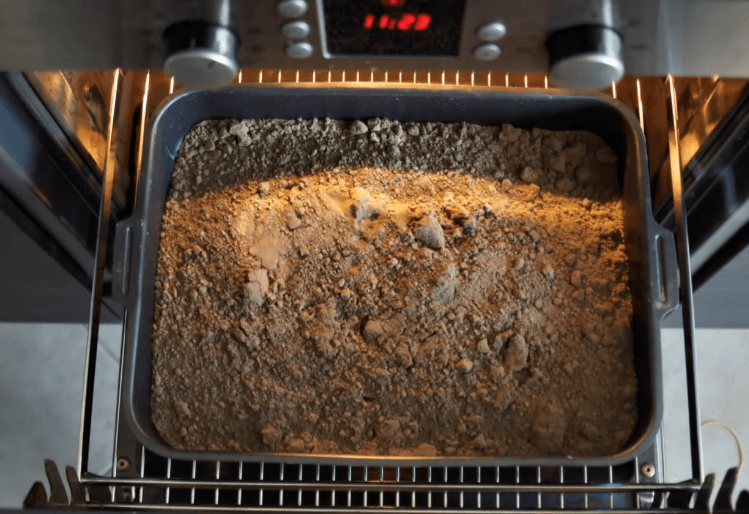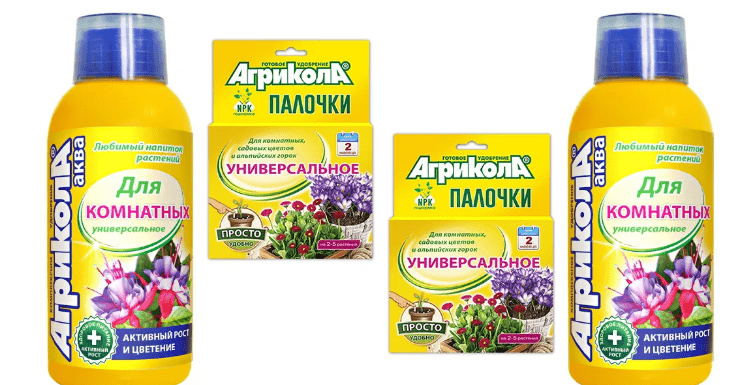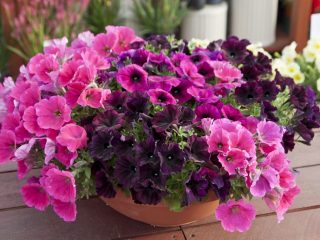Content
Growing torenia from seeds at home is not particularly difficult. It is much more difficult to care for a capricious plant during budding, especially for its delicate leaves. This flower can be grown both at home in a pot on the windowsill and in the garden.

Torenia flowers are very similar to bells, but the plant belongs to a different family
What torenia looks like
Torenia is native to Southeast Asia; the plant is also found in Africa. A spectacular flower with a lush head of leaves and bright bells, reminiscent of gloxinia flowers. Medium-sized buds with velvety petals grow one or two in the axils of the leaves.
The petals on one flower are unequal in shape, asymmetrical, and the color combines several shades. The tips of the petals on the bend are colored blue, purple, white, pink, yellow or red in different varieties.

In the depths of the pharynx the color is always lighter; there is always a yellow blurred spot there
The thin and delicate leaf plate does not tolerate even the slightest drying. The leaves are simple in shape, with a smooth edge or serrated, slightly pubescent, dark green, yellowish green or light green. The veins are highlighted in relief, creating a mesh pattern.
Flowering continues from the beginning of June until the end of September. The plant can be grown as a hanging plant - for varieties with long shoots - or as a pot plant - for varieties with short shoots. To enhance the decorative effect of torenia, not one, but two or three species are planted in a pot. The flower is propagated in most cases by seeds; cuttings take root with difficulty.
Types and best varieties
In total, the genus Torenia has more than 40 species. In floriculture, only four types of flowers are used: dark purple, stiff-haired, yellow and Fournier's torenia. Landscape designers, when selecting flowers, rarely do this by type; it is much more convenient to choose plants by the color of their petals and leaves. The most commonly used plant in home floriculture is Torenia fournieri.
There are several varieties bred based on this species:
- Raspberry marmalade;
Torenia Marmalade crimson flowers are painted purple-crimson with a white throat, at the base of the lower petal there is an orange spot
- Blueberry marmalade;
Color of Torenia Blueberry Marmalade - blue with a white throat and a spot on the lower petal
- Duchess White and Blue or Blue white;
Duchess Blue and White has a bush height of 25 cm, rich blue flowers with a white throat and a yellow spot on the lower lip
- Kawaii Lemon Lollipop;
Torenia Kawaii Lemon Drop has white petals with bright yellow spots and a dark yellow throat.
- Kawaii burgundy.
Kawai Burgundy flowers have a white corolla with a wide burgundy edge and a bright lemon smear
When to plant torenia
If you plan to grow a flower at home on a windowsill, then this can be done at any time of the year, but provided that the plants are illuminated.
Planting and caring for torenia at home for planting in the ground in central Russia begins in the first half of February. But you can easily calculate the sowing date in any region.
In the south, seedlings are planted in open ground in mid-May. From this date you need to count back the 60 days required for seedling growth. Planted seeds germinate in about 20 days, which means this period must also be taken into account. The total is 80 days. It turns out that the approximate date for sowing seeds is February 25-26.
Growing torenia from seeds at home
Torenia seeds are usually sold in pelleted form, which makes them easier to sow. The soil chosen is loose and fertile; soil for petunias or sifted garden soil with the addition of vermiculite are suitable.

In order to eliminate fungal diseases, the soil is calcined in the oven.
The soil mixture is laid out in cups and the sowing of torenia seeds begins. They are laid out on the surface of the damp soil, lightly pressing into it with a match or toothpick. Then the top is irrigated with warm water and the cups are covered with film. High temperature is not needed for seed germination; +20-22 °C is enough. The first shoots appear after 2.5-3 weeks.
Picking is carried out at the moment when one pair of true leaves appears on the plant.You can completely eliminate this procedure, since the delicate roots of torenia do not like it. In this case, the seeds should be sown in peat tablets.

Seeds are sown in peat tablets superficially, one piece per tablet.
Planting and caring for torenia in open ground
After the seedlings have 2-4 true leaves, they can be planted in a permanent place. It is better to plant in a spacious pot, even if you plan to grow the flower outside. The fact is that torenia is very sensitive to growing conditions; if planted in open ground, it will be exposed to precipitation, wind, and sunlight that is too bright for it. All this has a detrimental effect primarily on the leaves.
If you plant the torenia in a pot and place it in the garden in a shaded place protected from the wind, then in case of severe bad weather you can quickly bring the flowerpot with flowers home.
Pinching torenia
To make the bush grow and look more lush, the growth point of the main shoot is pinched. This is done at the moment when 5-6 true leaves appear on the seedlings. After pinching, increased growth of side shoots will begin, on which a large number of buds will form.
Watering
Watering for torenia should be moderate; waterlogging can lead to rotting of the roots. Seedlings are irrigated no more than once a week. In this case, you need to monitor the top layer of soil. The water should be completely absorbed, and the next time the seedlings are watered only after the soil has dried out at least 1 cm.
Fertilizer
Fertilizing torenia during the seedling period is not necessary, since the soil contains all the necessary nutritional elements in its composition. After transplanting the crop to a permanent place, fertilizers are applied at least twice a month with mixtures for flowering plants - Kemira Lux, Fertika, Agricola.

During budding, it is especially important to provide potassium and phosphorus; these elements contribute to more luxuriant flowering and bright color of the petals
Wintering
When cold weather sets in, pots of torenia are brought home and cared for in the same way as other house flowers. The backlight should provide a 12-hour daylight hours. Watering as abundant as in summer is not necessary; you still need to focus on the top layer of soil.
But if indoor eustomas can live on a windowsill for 3-4 years, then the maximum for torenia is two years, provided that ideal conditions are created for it.

Torenia tolerates cool air on the windowsill well in winter
Reproduction of torenia
Flowers are propagated mainly by seedlings; sowing small seeds in open ground is not practiced. Another propagation method - cuttings - is rarely used, because very often seedlings in water or soil rot before they have time to form roots.
Diseases and pests
Diseases rarely affect torenia. In open ground, when it gets cold at the end of summer, powdery mildew may appear on the leaves. It can be cured in the initial stages by spraying the bushes with fungicides - Fitosporin, Bordeaux mixture, Fundazol.
If the water balance in the container where torenia grows is disturbed, the root system may rot due to excess moisture. A sign of the disease is the wilting of leaves at normal soil moisture.It will not be possible to save such a plant; you will have to part with it.

The first signs of powdery mildew on torenia leaves are a white coating.
In open ground and at home, a spider mite, a microscopic arachnid insect that feeds on plant juices, may appear on the tree. A large spread of the pest is observed in hot and dry weather. Pests such as aphids and whiteflies damage the leaf mass.
Why do torenia leaves dry out?
This problem occurs in torenia if the seedlings are taken out into the open air for a long period without preparation. This should be done gradually, starting with 15 minutes, and increase this time by 15-20 minutes every day.
If during the plant’s adaptation period the sun’s rays fall on it, the leaf plate will burn. It will turn white almost immediately and dry out in 1-2 days.
Photo of torenia in landscape design
Torenia is not a particularly popular crop in Russia, so it is quite rare to find it on the landscape of the site. However, the flower is very versatile and goes well with most other plants.

Torenia looks good in tubs next to ferns and coleus

The hanging torenia in the barbecue area will look original

An ampel torenia in a tall vase looks great against the background of the walls

Bushes of low-growing torenia can be placed on an alpine hill

A border of flowering torenia bushes can be formed along a stone path
Conclusion
Growing torenia from seeds at home is no more difficult than cultivating seedlings of other flowers, but so far this crop is not widespread in Russia.It does not compete with annuals such as petunia, eustoma, and viola due to its high demands on living conditions.













